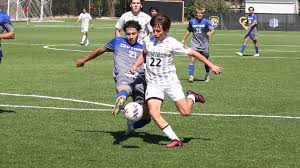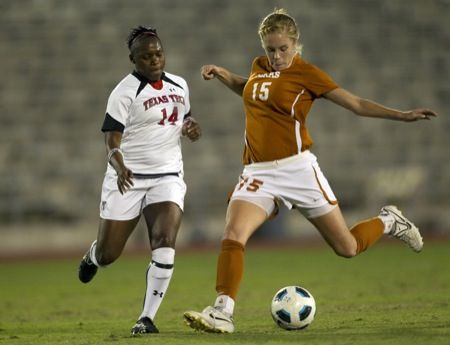May 14, 2024
•
Guides
Understanding Team Roster Sizes in Men's and Women's College Soccer

The latest on everything
College Soccer

Get our 5-minute, daily newsletter on what matters in college soccer.
Choosing the right collegiate soccer program is pivotal for aspiring student-athletes.
Beyond understanding the competitive landscape of NCAA divisions, prospective players often ponder practical aspects like team roster sizes in various collegiate leagues, including NCAA, NAIA, and JUCO.
Knowing how many players typically make up college soccer teams can influence your decision based on opportunities for participation and personal development.
NCAA Team Composition
In NCAA soccer across D1, D2, and D3, the team sizes can vary based on the program's funding, coaching strategy, and institutional policies.
- Regulation Sizes
A collegiate soccer team fields 11 players per game, including a goalkeeper. This standard ensures consistency with global soccer norms.
- Roster Sizes
NCAA soccer teams typically carry between 18 to 30 players. This range allows for depth, providing substitutes for different positions and covering for injuries or academic ineligibilities.
NAIA and JUCO Team Composition
Similar to NCAA, NAIA and JUCO programs also adhere to the 11-player game standard but can differ in overall team roster sizes.
- NAIA Teams
NAIA programs often mirror NCAA in structure but may have slightly more flexibility in scholarship distribution and roster sizes due to different governing rules. Roster sizes in NAIA can vary broadly, often influenced by the specific athletic department's resources and the program's competitive level.
- JUCO Teams
Junior Colleges (JUCO), regulated by the NJCAA, can vary significantly in team size. Due to often more limited resources and a focus on developing players for transfer to four-year institutions, JUCO team sizes can range from smaller to comparable with NCAA programs, generally hovering around 18-25 players.
Factors Influencing Team Sizes
Several factors contribute to team sizes across all collegiate levels:
- Recruitment Goals
Coaches recruit based on team needs, which can include filling specific positional gaps or enhancing competitive depth.
- Scholarships and Funding
Financial resources affect how many players a program can afford to recruit and maintain. NCAA D1 and D2, as well as NAIA, offer athletic scholarships, whereas NCAA D3 and JUCO do not, influencing team composition based on budget constraints.
- Tactical Considerations
Coaches consider tactical setups, with larger squads allowing for frequent rotations to maintain player freshness throughout the season.
Impact of Roster Sizes on Players
The size of the soccer team can significantly impact your college experience:
- Playing Time
Larger teams might mean more competition for starting spots, potentially reducing individual playing time. Conversely, smaller teams might offer more opportunities to play regularly.
- Development Opportunities
Larger teams in higher-tier programs may provide better development opportunities through high-level coaching and facilities. Smaller teams might offer more personalized coaching and leadership opportunities.
- Team Dynamics
Larger squads may experience more internal competition, while smaller teams may foster closer relationships and greater team cohesion.
Choosing the Right Fit
When deciding which division or association and team size best suit your needs, consider your priorities for both soccer and academics:
- NCAA Programs
Offer a range of competitive environments with varying team sizes. D1 and D2 might be suitable for those aiming for professional careers, given their exposure and higher levels of competition and scholarships. D3 provides a balance with a strong academic focus.
- NAIA Programs
Ideal for players seeking competitive soccer with potentially more scholarship flexibility than NCAA D3 but less intensity than D1.
- JUCO Programs
Best for players needing developmental time or academic improvement before transferring to four-year institutions, with smaller teams and often more personalized attention.
Understanding the typical team sizes and the dynamics they bring to your college soccer experience across different collegiate levels is crucial. Evaluate how these factors align with your personal goals, academic needs, and athletic aspirations to make the best decision for your future in collegiate soccer.
Related
#1 College Soccer Newsletter
Join thousands of current readers and get our 5-minute, daily newsletter on what matters in college soccer.





